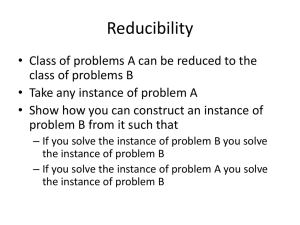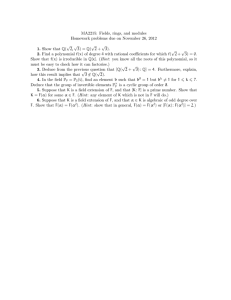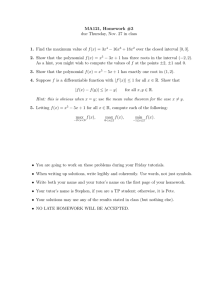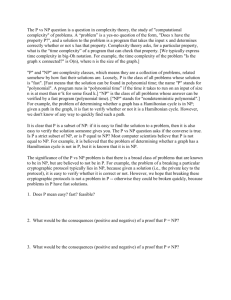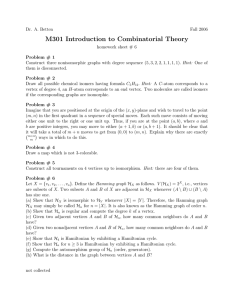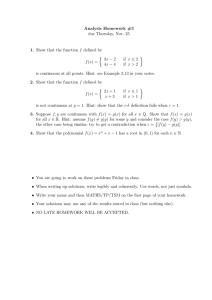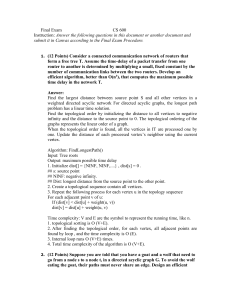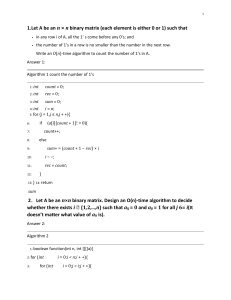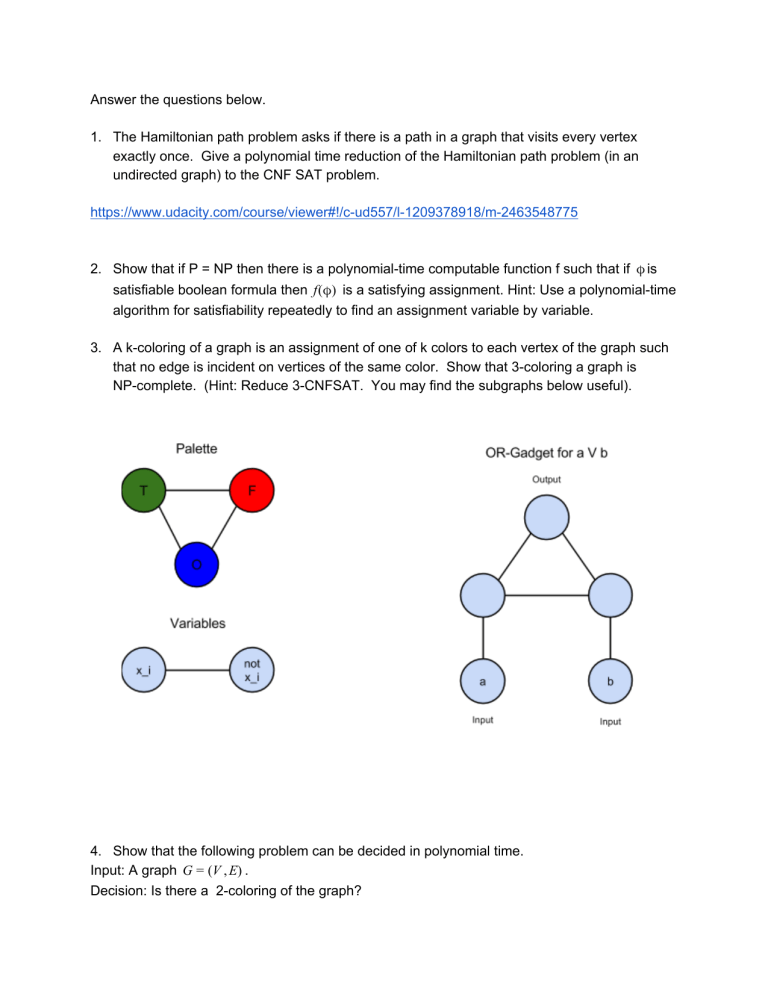
Answer the questions below.
1. The Hamiltonian path problem asks if there is a path in a graph that visits every vertex
exactly once. Give a polynomial time reduction of the Hamiltonian path problem (in an
undirected graph) to the CNF SAT problem.
https://www.udacity.com/course/viewer#!/c­ud557/l­1209378918/m­2463548775
2. Show that if P = NP then there is a polynomial­time computable function f such that if ϕ is
satisfiable boolean formula then f (ϕ) is a satisfying assignment. Hint: Use a polynomial­time
algorithm for satisfiability repeatedly to find an assignment variable by variable.
3. A k­coloring of a graph is an assignment of one of k colors to each vertex of the graph such
that no edge is incident on vertices of the same color. Show that 3­coloring a graph is
NP­complete. (Hint: Reduce 3­CNFSAT. You may find the subgraphs below useful).
4. Show that the following problem can be decided in polynomial time.
Input: A graph G = (V , E) .
Decision: Is there a 2­coloring of the graph?
5. Given a complete graph G = (V, E) with non­negative integer costs on the edges c : E → Z +
and an integer bound k, the Traveling Salesperson problem (TSP) is to decide if there is a
Hamiltonian cycle in G whose total cost is at most k. Recall that a Hamiltonian cycle visits
every vertex once.
Metric TSP is the constrained case where the edge cost function c satisfies the triangle
inequality. That is, for all vertices u, v, w ∈ V , we have c(u, w) ≤ c(u, v) + c(v, w) .
Give a polynomial time reduction from TSP problem to Metric TSP a
nd prove its
correctness
.
Hint: You don’t need to change the graph
,
just c and k.
6. The Knapsack problem may be stated as follows. Given n items with weights w1 . . . wn and
corresponding
values v1 . . . vn , is there a subset of items S ⊆ {1 . . . n} such that the sum of
the weights is at most some capacity W (i.e. ∑ wi ≤ W ) and the sum of the values is at least
i∈S
V (i.e. ∑ vi ≥ V ) ? The traditional interpretation is that a robber wants to rob an art gallery
i∈S
and make off with most valuable collection of pieces that he can carry in his knapsack.
Show that Knapsack is NP­complete (Hint: reduce from Subset­Sum).
